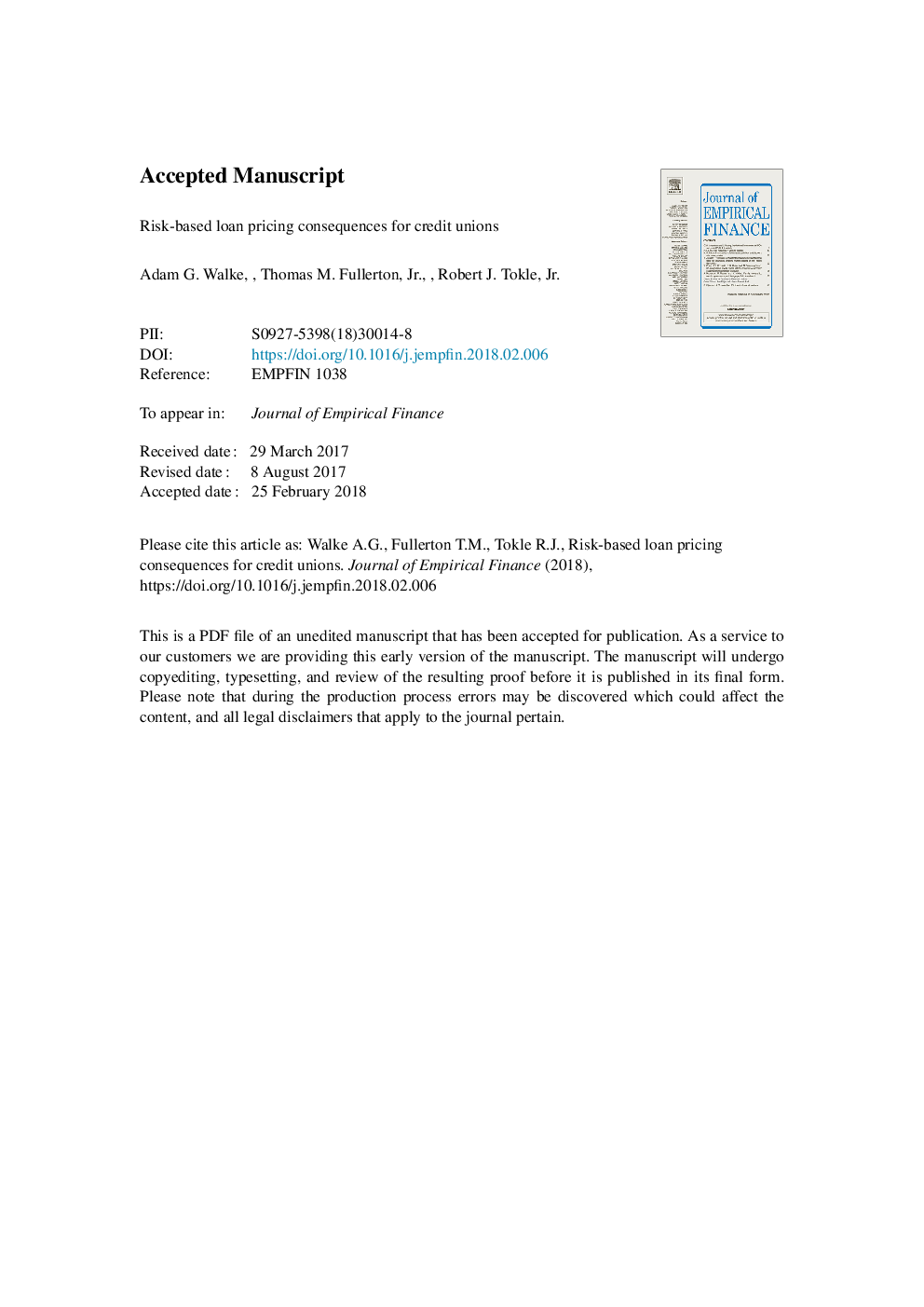| Article ID | Journal | Published Year | Pages | File Type |
|---|---|---|---|---|
| 7360510 | Journal of Empirical Finance | 2018 | 33 Pages |
Abstract
Risk-based pricing, in which interest rate offers vary according to individual borrower risk levels, has been increasingly used to price credit union loans in the United States. The key question examined in this research, given credit union not-for-profit objectives, is whether this pricing strategy increases the availability of loans, particularly for high-risk borrowers. Data on the number of loans per credit union member and loan delinquency rates are used to assess loan access and average risk-levels, respectively. The results indicate that risk-based pricing adopters increase the availability of loans relative to otherwise similar non-adopters. However, average risk levels, as measured by delinquency rates, appear to be somewhat lower for adopters of risk-based pricing compared to matched non-adopters. This suggests that lending increases primarily for low-risk borrowers, which contrasts with claims that risk-based pricing chiefly benefits high-risk borrowers who might otherwise be denied credit.
Related Topics
Social Sciences and Humanities
Economics, Econometrics and Finance
Economics and Econometrics
Authors
Adam G. Walke, Thomas M. Jr., Robert J. Tokle,
